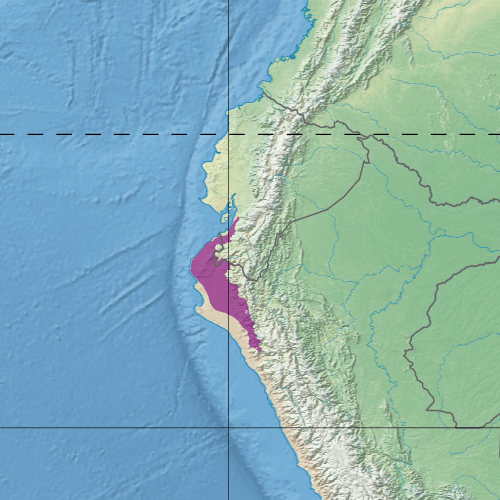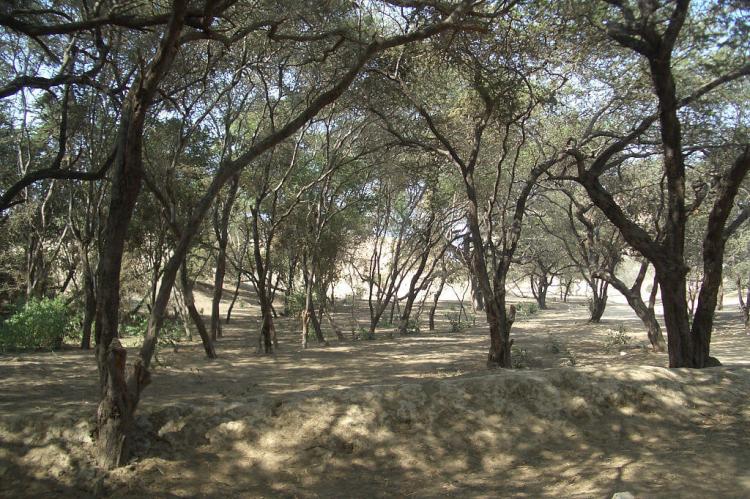The Tumbes-Piura Dry Forests: A Biodiversity Hotspot within the Tumbes-Chocó-Magdalena Region
The Tumbes-Piura dry forests ecoregion in northwestern Peru and southwestern Ecuador is a part of the larger Tumbes-Chocó-Magdalena biodiversity hotspot. It has a unique ecosystem with a high concentration of endemic species and faces significant conservation challenges.
The Tumbes-Piura Dry Forests: A Biodiversity Hotspot within the Tumbes-Chocó-Magdalena Region
The Tumbes-Piura dry forests ecoregion is nestled along the Pacific coast of northwestern Peru and southwestern Ecuador. This unique and remarkable ecosystem is part of the larger Tumbes-Chocó-Magdalena biodiversity hotspot. This ecoregion, often overshadowed by the more well-known tropical rainforests of the Amazon basin, is a biodiversity hotspot in its own right, harboring an exceptional concentration of endemic species and facing significant conservation challenges.
Geographical Setting
The Tumbes-Piura dry forests stretch across the coastal regions of Tumbes and Piura in Peru and the Ecuadorian provinces of El Oro and Esmeraldas. This ecoregion is situated within the Tumbesian region, a biogeographical zone encompassing the coastal and Andean foothills of northwestern Peru and southwestern Ecuador. A complex landscape with a mosaic of low hills, valleys, and coastal plains characterizes the area.
Climate and Seasonality
The Tumbes-Piura dry forests experience a tropical dry climate, with a well-defined rainy season typically lasting from January to April, followed by a prolonged dry season. Rainfall patterns in the region are heavily influenced by the El Niño-Southern Oscillation (ENSO) phenomenon, which can bring significantly increased precipitation during El Niño years and prolonged drought during La Niña events.
Vegetation and Ecosystem Dynamics
The dominant vegetation in the Tumbes-Piura dry forests is a mixture of deciduous and semi-deciduous tree species, including the iconic Ceiba (Ceiba trichistandra) and Algarrobo (Prosopis pallida) trees. During the dry season, many of these trees shed their leaves, transforming the landscape into a patchwork of bare branches and lush green foliage. The understory is characterized by diverse shrubs, vines, and herbaceous plants adapted to the region's water-stressed conditions.
Biodiversity and Endemism
The Tumbes-Piura dry forests are renowned for their exceptional biodiversity and high levels of endemism. This ecoregion is home to numerous plant and animal species found nowhere else on Earth, making it a critical conservation priority. Notable endemic species include the Tumbes Hummingbird (Phaethornis baroni), the Tumbesian Antshrike (Thamnophilus tenuepunctatus), and the Tumbes Swallow (Tachycineta stolzmanni).
Threats and Conservation Efforts
Despite its ecological significance, the Tumbes-Piura dry forests face various threats, including habitat loss and degradation due to agricultural expansion, urban development, and unsustainable resource extraction. Additionally, the region is vulnerable to the impacts of climate change, which can further exacerbate the effects of drought and alter the delicate balance of the ecosystem.
Various conservation organizations and government agencies have implemented initiatives to protect and restore the Tumbes-Piura dry forests in response to these challenges. These efforts include establishing protected areas, such as the Bosque Seco Biosphere Reserve, which was designated by UNESCO in 2016 to help conserve the unique dry forest habitats and the biodiversity they support.
The Bosque Seco Biosphere Reserve covers an area of over 1.3 million hectares, spanning parts of the Tumbes and Piura regions in Peru, as well as the Ecuadorian province of El Oro. This protected area aims to balance the conservation of the dry forest ecosystems with the sustainable development of local communities, promoting ecotourism, agroforestry, and other nature-based economic activities.
In addition to the Bosque Seco Biosphere Reserve, other conservation efforts in the region include promoting sustainable land management practices and implementing community-based conservation programs. However, ongoing vigilance and continued support are crucial to ensuring the long-term survival of this unique and irreplaceable ecoregion.
Conclusion
The Tumbes-Piura dry forests are a remarkable and often overlooked biodiversity hotspot, a testament to the incredible natural heritage of the Tumbesian region. As we work to safeguard the future of this unique ecosystem, we must recognize its ecological significance and commit to its protection for the benefit of the countless species that call it home and the generations to come.

Map depicting the location of the Tumbes-Piura dry forests (in purple).
